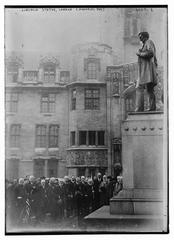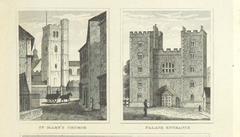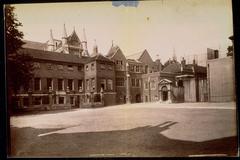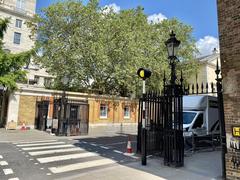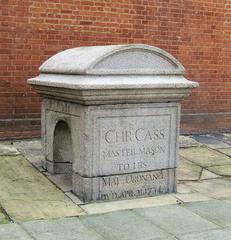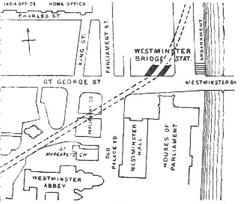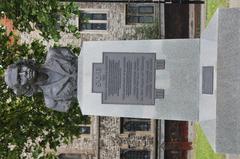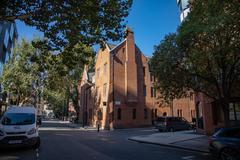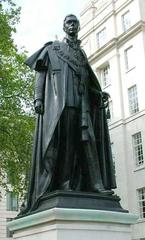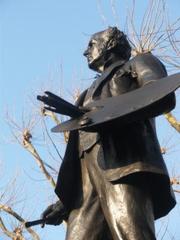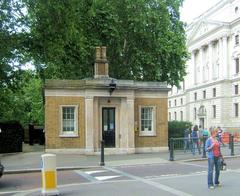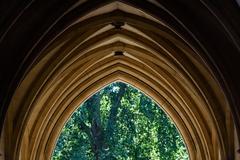Visiting The Burghers of Calais in Kingston Upon Thames, United Kingdom: A Comprehensive Guide
Date: 14/06/2025
Introduction
Auguste Rodin’s The Burghers of Calais is one of the most evocative sculptures in modern art, immortalizing a pivotal moment of courage and sacrifice during the Hundred Years’ War. While the original stands in Calais, France, Kingston Upon Thames proudly hosts a cast of this masterpiece, offering visitors an accessible and deeply moving cultural experience. This guide provides an in-depth look at the monument’s historical context, Rodin’s artistic vision, practical visitor information, and tips for making the most of your visit to Kingston Upon Thames.
Table of Contents
- Historical Background
- Visiting The Burghers of Calais in Kingston Upon Thames
- Frequently Asked Questions (FAQ)
- Visuals and Media
- Summary and Visitor Tips
- Sources and Further Reading
Historical Background
The Hundred Years’ War and the Siege of Calais
The Hundred Years’ War (1337–1453) was a prolonged and tumultuous conflict between England and France, with the port city of Calais serving as a vital prize due to its strategic importance for both trade and military operations. In 1346–1347, after an eleven-month siege by King Edward III of England, the citizens of Calais faced starvation and surrender became inevitable (Musée Rodin; DailyArt Magazine).
The Act of Sacrifice
Edward III demanded that six prominent citizens (burghers) give themselves up for possible execution in exchange for sparing the rest of the population. Eustache de Saint Pierre, Jean d’Aire, Jacques de Wissant, Pierre de Wissant, Andrieu d’Andres, and Jean de Fiennes—barefoot, dressed in plain tunics, ropes around their necks, and carrying the city’s keys—volunteered as hostages. The narrative, recounted by chronicler Jean Froissart, saw the burghers’ lives ultimately spared through the intercession of Queen Philippa of Hainault (Odyssey Opera; History Visit).
Artistic Interpretations Before Rodin
The selfless act of the burghers inspired artistic representations for centuries before Rodin, notably in medieval illuminations and works by Jean-Simon Berthélemy, Benjamin West, and Ary Scheffer. These early depictions typically emphasized themes of patriotism, duty, and the moral struggles of leadership (Odyssey Opera).
Rodin’s Commission and Artistic Vision
In 1884, Auguste Rodin was commissioned by the city of Calais to create a monument to the burghers. Rodin’s approach was groundbreaking: instead of portraying the burghers as triumphant heroes, he rendered them as individuals gripped by anguish, uncertainty, and moral struggle. The six figures, each expressing unique emotions—from despair and resignation to defiance—are physically close yet emotionally isolated, standing together but not interacting directly (Metropolitan Museum of Art). Rodin’s decision to place the figures at ground level, rather than on a pedestal, allows viewers to engage intimately with the scene, fostering empathy and reflection (Musée Rodin).
Symbolism and Interpretive Significance
Rodin’s The Burghers of Calais is celebrated for its emotional realism and psychological complexity. The ropes symbolize submission, while the keys represent the burden of responsibility. By focusing on vulnerability and internal conflict, Rodin redefined public monuments, shifting the narrative from heroism to humanity (Musée Rodin; Metropolitan Museum of Art).
Visiting The Burghers of Calais in Kingston Upon Thames
Location and Accessibility
The monument is located in a landscaped public space in Kingston Upon Thames, within easy reach of the town center and public transport. The site is wheelchair accessible, with paved paths and ramps facilitating close-up viewing for all visitors.
- Transport: Frequent trains from London Waterloo (approx. 30 minutes); local bus routes serve the town center.
- Parking: Available in nearby public car parks, though spaces can be limited at peak times.
Visiting Hours and Admission
- Hours: The sculpture is outdoors and accessible 24 hours a day, year-round. For optimal viewing and photography, visit during daylight hours.
- Admission: Free of charge; no ticket required.
Guided Tours and Educational Resources
- Guided Tours: Local heritage organizations and visitor centers occasionally offer guided tours that include the monument. Check the Kingston Council’s arts and heritage page or the tourism website for current schedules.
- Educational Resources: Informational plaques and QR codes on-site provide historical and artistic context. Schools and universities frequently organize educational visits.
Nearby Attractions
Enhance your cultural itinerary with these local sites:
- Kingston Market Place: Historic market with local food and crafts.
- Kingston Museum: Exhibitions on local history and art.
- Riverside Walks: Scenic paths along the Thames.
- Hampton Court Palace: A short distance away, offering rich Tudor history.
Tips for Visitors
- Visit early in the morning or late in the afternoon for softer light and fewer crowds.
- Walk around the sculpture to appreciate Rodin’s attention to detail from multiple angles.
- Respect the artwork by not climbing on the figures.
- Use QR codes for in-depth information about the monument and its context.
- Combine your visit with a stroll along the riverside or a stop at a local café.
Frequently Asked Questions (FAQ)
Q: Is there an entry fee to see The Burghers of Calais sculpture?
A: No, the sculpture is in a public space and free to visit.
Q: What are the visiting hours?
A: The site is open 24/7, though daytime is best for viewing and safety.
Q: Is the site wheelchair accessible?
A: Yes, paved paths and ramps make the site accessible.
Q: Are guided tours available?
A: Occasionally, through local heritage groups. Check with the Kingston visitor center.
Q: Can I take photographs?
A: Yes, photography is encouraged, but please do not touch or climb on the sculpture.
Visuals and Media
Alt text: Bronze sculpture of The Burghers of Calais by Auguste Rodin displayed outdoors in Kingston Upon Thames, showing six figures with distinct expressions and poses.
For maps, virtual tours, and more images, visit local tourism websites or the Kingston Council’s arts and heritage page.
Summary and Visitor Tips
The Burghers of Calais in Kingston Upon Thames stands as a powerful testament to human courage, sacrifice, and the enduring power of art. The monument’s accessible setting at ground level invites visitors to engage personally with Rodin’s masterful depiction of psychological and emotional struggle. Free and open to the public year-round, it is an essential destination for art lovers, history enthusiasts, and anyone seeking a meaningful cultural experience. Enhance your visit by exploring nearby attractions and participating in local cultural events or guided tours.
For the latest updates on exhibitions, guided tours, and cultural events, consult official resources like the Kingston Tourism website and consider downloading the Audiala app for curated audio tours and historical insights.
Sources and Further Reading
- The Burghers of Calais by Auguste Rodin — Musée Rodin
- The Burghers of Calais in Art History — Odyssey Opera
- Auguste Rodin: The Burghers of Calais — Hirshhorn Museum
- The Burghers of Calais — Triphobo
- The Burghers of Calais — DailyArt Magazine
- The Burghers of Calais — Metropolitan Museum of Art
- Kingston Upon Thames Tourism — Official Website
- History Visit: The Burghers of Calais
- Waymarking.com: The Burghers of Calais, Victoria Tower Gardens
- The History of Art: The Burghers of Calais
